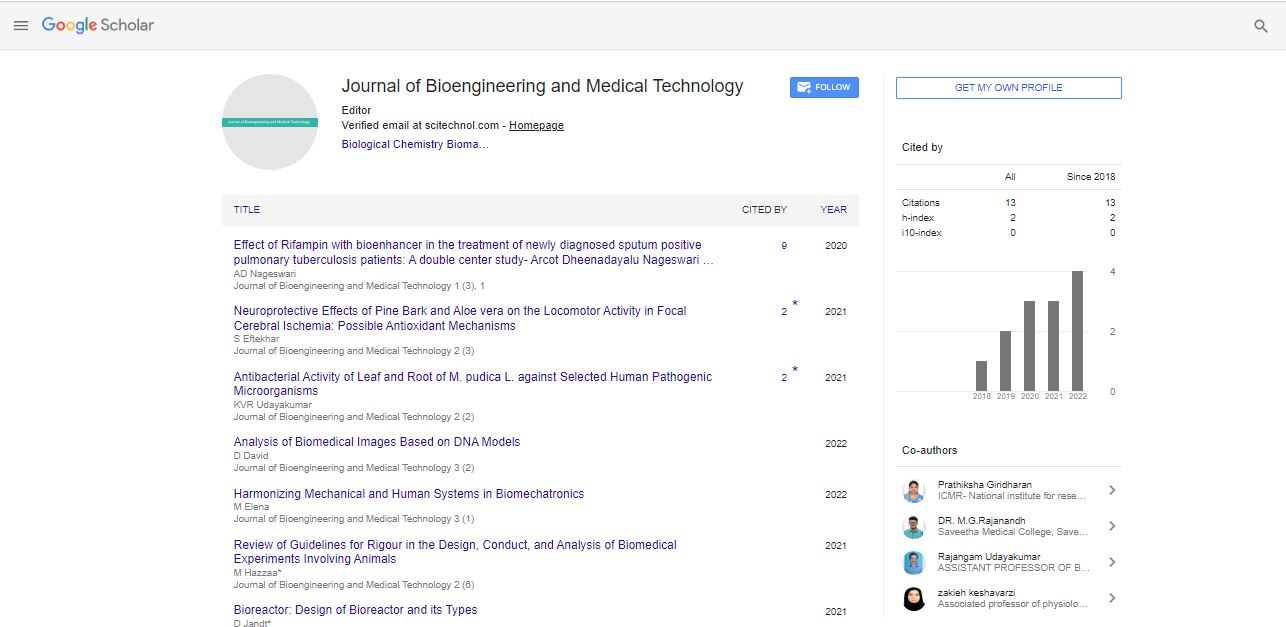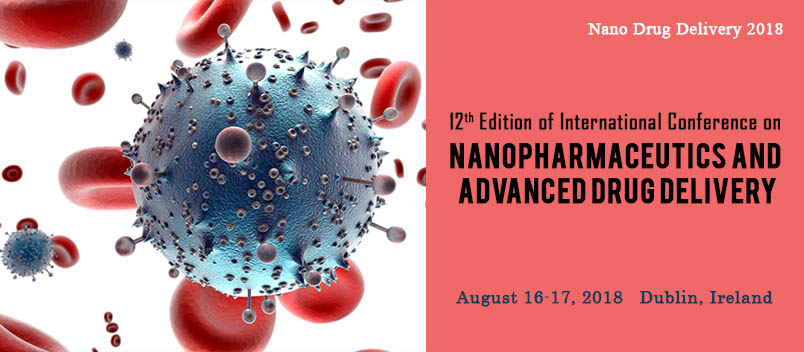Editorial, Jbmt Vol: 3 Issue: 1
A Keynote Presentation on Molecular Cell Biology
Gianluca Michela*
Department of Pharmaceutical Technology, School of Pharmacy, Ethiopia
*Corresponding Author:
Gianluca Michela
Department of Pharmaceutical Technology, School of Pharmacy, Ethiopia
E-mail:gianlucamichela@gmail.com
Received date: 04 January, 2022; Manuscript No. JBMT-22-57162;
Editor assigned date: 06 January, 2022; PreQC No. JBMT-22-57162(PQ);
Reviewed date: 17 January, 2022; QC No JBMT-22-57162;
Revised date: 27 January, 2022; Manuscript No. JBMT-22-57162(R);
Published date: 03 February, 2022; DOI: 10.4172/jbmt.100050.
Citation: Michela G (2022) A Keynote Presentation on Molecular Cell Biology. JBMT 3:1.
Abstract
All biological diversification can be traced back to evolutionary changes at the cellular level. The fundamental questions about how cells work and how they came to be the way they are framed by this important role of cells. Despite the fact that these two fields of research fall under the traditional domains of cell biology and evolutionary biology, there is a lack of a thorough synthesis of evolutionary and cell-biological ideas. The merging of these two eponymous sciences with the theoretical and quantitative aspects of biochemistry, biophysics, and population genetics is defined as evolutionary cell biology. The main objectives are to build a mechanistic understanding of universal evolutionary processes while also incorporating an evolutionary perspective into cell biology. The full development of this interdisciplinary field has the potential to solve a variety of problems in biology, including the extent to which selection, effectively neutral processes, historical contingencies, and/or constraints at the chemical and biophysical levels dictate intracellular feature variation patterns [1]. These issues may now be investigated at both the intra- and inter-species levels, with single-cell methods even permitting quantification of genetic variation. Some of the findings from this new field have already had a big impact on cell biology, and future discoveries will have a big impact on agriculture, medicine, environmental research, and synthetic biology.
Keywords: Molecular Cell Biology
Introduction
All biological diversification can be traced back to evolutionary changes at the cellular level. The fundamental questions about how cells work and how they came to be the way they are framed by this important role of cells. Despite the fact that these two fields of research fall under the traditional domains of cell biology and evolutionary biology, there is a lack of a thorough synthesis of evolutionary and cell-biological ideas. The merging of these two eponymous sciences with the theoretical and quantitative aspects of biochemistry, biophysics, and population genetics is defined as evolutionary cell biology. The main objectives are to build a mechanistic understanding of universal evolutionary processes while also incorporating an evolutionary perspective into cell biology.
The full development of this interdisciplinary field has the potential to solve a variety of problems in biology, including the extent to which selection, effectively neutral processes, historical contingencies, and/or constraints at the chemical and biophysical levels dictate intracellular feature variation patterns [1]. These issues may now be investigated at both the intra- and inter-species levels, with single-cell methods even permitting quantification of genetic variation. Some of the findings from this new field have already had a big impact on cell biology, and future discoveries will have a big impact on agriculture, medicine, environmental research, and synthetic biology.
One of life's earliest evolutionary changes was the emergence of cells, which allowed replicating organisms to capture the rewards of their catalytic activity while also providing a unit of inheritance for future evolutionary refinement and diversification [2]. Cell biology focuses on the biophysical or biochemical aspects of a wide range of properties, including gene expression, metabolism, intracellular transport and communication, cellâ??cell interactions, motility, and growth, due to the importance of cellular features in all areas of biology. No one can deny the valuable contributions that have resulted from this focus on cell function. Cell biologists, on the other hand, have usually avoided the variety that drives most evolutionary biology concerns, focusing instead on enhancing experimental consistency in a few well-characterized model systems [3].
Because all evolutionary change necessitates changes at the cellular level, understanding how cellular traits develop and diversify should be a major focus of evolutionary biology study. If there is one major flaw in this profession, it is the lack of mainstream cell biology thought [4]. Despite the spike in interest at the molecular, genomic, and developmental levels, cellular traits are only marginally studied in today's evolution, possibly due to a lack of awareness for their enormous variety among taxa. However, without a grasp of how cellular characteristics are generated and modified, a complete mechanistic understanding of evolutionary processes will never be realized.
The moment has come to merge the historically disparate areas of cell biology and evolutionary biology, as well as the concepts of biophysics and biochemistry, into a formal field known as evolutionary cell biology. Recent breakthroughs in cell-biological analysis and the gathering of 'omic-scale information have expanded the possibilities for study on nonstandard model animals, allowing evolutionary variety to be incorporated into cell-level analyses. The rising realization in both groups that an intellectual merging will offer major gains in our understanding of cell-biological structures, functions, and processes, as well as insights into the cellular substrate for evolutionary change, has prompted our vision for this synthesis [5]. Although not an exhaustive list, the following questions motivate and illustrate the potential for this new field.
Molecular Biology
We're in the midst of a biological revolution, as molecular biology and cell biology are quickly merging. The molecular structure of huge cellular assemblies (such as the nuclear pore) and the in situ structure of these assemblies within cells are becoming increasingly precise thanks to new breakthroughs in electron microscopy. However, there are still significant gaps in what can be seen immediately. We still need to use integrative modeling to address these gaps, with the goal of accumulating the present state of knowledge and developing models that are compatible with what we know [6].
We've been using an integrative technique to make pictures of parts of living cells with molecular information for the past 30 years. The purpose of these representations is to show all interactions that may occur by including all macromolecules at the appropriate size, concentration, and position. Although databases such as the Protein Data Bank, UniProt, and PubMed provide a wealth of information, some features of these representations will obviously require artistic license to add hypothesis and speculations about aspects that are currently under investigation [7]. These graphics require a lot of time and effort, as they are based on decades of experience in both obtaining relevant data and rendering the final image.
In 2016, we launched the CellPAINT initiative to enable students, educators, and researchers to produce integrative drawings. The programmer is similar to typical digital painting software in that it has a canvas and molecular "brushes" for creating cellular scenes using proteins, membranes, DNA, and other molecules. CellPAINT takes care of the size and interaction details, allowing users to concentrate on the scene's biology and investigate how molecular configurations can rise to emergent physiological traits [8].
Users frequently relate CellPAINT to Bio Render when they first encounter it. Bio render is a complete application for making biological schematics that are commonly used in academic publications and professional presentations. Bio render, like CellPAINT, offers a collection of sprites that may be added to a scene interactively. CellPAINT's goals, on the other hand, are quite different from those of bio render; hence it's created with a separate set of underlying limitations and assumptions. CellPAINT aims to create a scene that accurately depicts a specific region of a cell or virus by reflecting the physical size and properties of the molecules [9]. In Bio Render, on the other hand, icons representing atoms, molecules, cells, and even entire organisms may be readily integrated into a single figure, together with labels and other graphical elements, to communicate higher-level concepts.
CellPAINT has mostly been used in educational contexts in previous editions. For example, at PDB-101, the RCSB Protein Data Bank's teaching portal, we held a visualization competition. The competition was available to people of all ages, and entries were accepted in two categories: Scientific art that presented the subject with scientific correctness and fine art that was only restricted by the artist's imagination [10].
The contributions demonstrated a tremendous breadth of originality, underscoring CellPAINT's versatility in allowing a diverse spectrum of visuals. CellPAINT-2.0, the new version of CellPAINT presented here, adds a slew of new features and paves the way for researchers to use interactive integrative illustration as a tool for hypothesis generation, as well as a gateway to more quantitative approaches to modeling the molecular structure of living cells. We show how CellPAINT can be used to understand cryo-focused ion beam (FIB)-milled tomograms of mitochondria working in their original cellular environment. Tomograms of cellular landscapes can be difficult to read since they are often densely packed with subcellular organelles and a wide range of protein complexes.
References
- Fernandes H, Moroni L, Blitterswijka CV, Boer JD (2009) Extracellular matrix and tissue engineering applications. J Mater Chem 19: 5474-5484. [Crossref] [Google Scholar]
- Lipowsky R (2006) The physics of bio-systems: From molecules to networks. Biophys Rev Lett 1: 223-230. [Crossref] [Google Scholar]
- Jones RG, Thompson CB (2009) Tumor suppressors and cell metabolism: A recipe for cancer growth. Genes Dev 23: 537-548. [Crossref] [Google Scholar] [Indexed]
- Farhan H, Rabouille C (2011) Signalling to and from the secretory pathway. J Cell Sci 124: 171-180. [Crossref] [Google Scholar] [Indexed]
- Ghesquière B, Wong BW, Kuchnio A, Carmeliet P (2014) Metabolism of stromal and immune cells in health and disease. Nature 51: 167-176. [Crossref] [Google Scholar] [Indexed]
- Jaalouk DE, Lammerding J (2009) Mechanotransduction gone awry. Nat Rev Mol Cell Biol 10: 63-73. [Crossref] [Google Scholar] [Indexed]
- Mager MD, LaPointe V, Stevens MM (2011) Exploring and exploiting chemistry at the cell surface. Nat Chem 3: 582-589. [Crossref] [Google Scholar] [Indexed]
- Szasz O (2013) Renewing oncological hyperthermia-oncothermia. Open J Biophys 3: 245252. [Crossref] [Google Scholar]
- Rienks M, Papageorgiou AP, Frangogiannis NG, Heymans S (2014) Myocardial extracellular matrix: An ever-changing and diverse entity. Circ Res 114: 872-888. [Crossref] [Google Scholar] [Indexed]
- Ritchie MD, Holzinger ER, Li R, Pendergrass SA, Kim D (2015) Methods of integrating data to uncover genotype-phenotype interactions. Nat Rev Genet 16: 85-97. [Crossref] [Google Scholar] [Indexed]
 Spanish
Spanish  Chinese
Chinese  Russian
Russian  German
German  French
French  Japanese
Japanese  Portuguese
Portuguese  Hindi
Hindi 
